From The Greatest Living Englishman:
“An electric car is no different from a chest freezer or a microwave oven. There’s no glamour or excitement.”
Quite.

From The Greatest Living Englishman:
“An electric car is no different from a chest freezer or a microwave oven. There’s no glamour or excitement.”
Quite.
I understand the sentiment behind automotive purism: the feeling that classic cars shouldn’t be modified at all, and kept in their original “as-is” condition. These are also known as “concours” (or “concourse”) cars, and there’s a whole breed of people who inhabit this world: owners, judges, nitpickers and so on.
It’s a specialty niche, and as I said, I get it. (The Gun Thing has a similar niche — you know, the guys who won’t touch a gun unless all the serial numbers match, and hardly if ever actually, you know, shoot them.)
But I also like the other kind of car guy, the kind that says, “Yeah, that’s okay; but really, times have moved on and we can improve on the original and make them more fun, more driveable, more reliable…” You get the picture.
Here’s an example of the latter, in which Jay Leno talks to the guy behind the “Outlaw 356” ethos, whose company (Emory Motorsports) takes old Porsche 356s and rebuilds these rather underpowered beauties into rip-snorting performance models.
I want one.
I wouldn’t mind one of the “pure” 356s either, mind you; but the Outlaw models… these are just excellent.
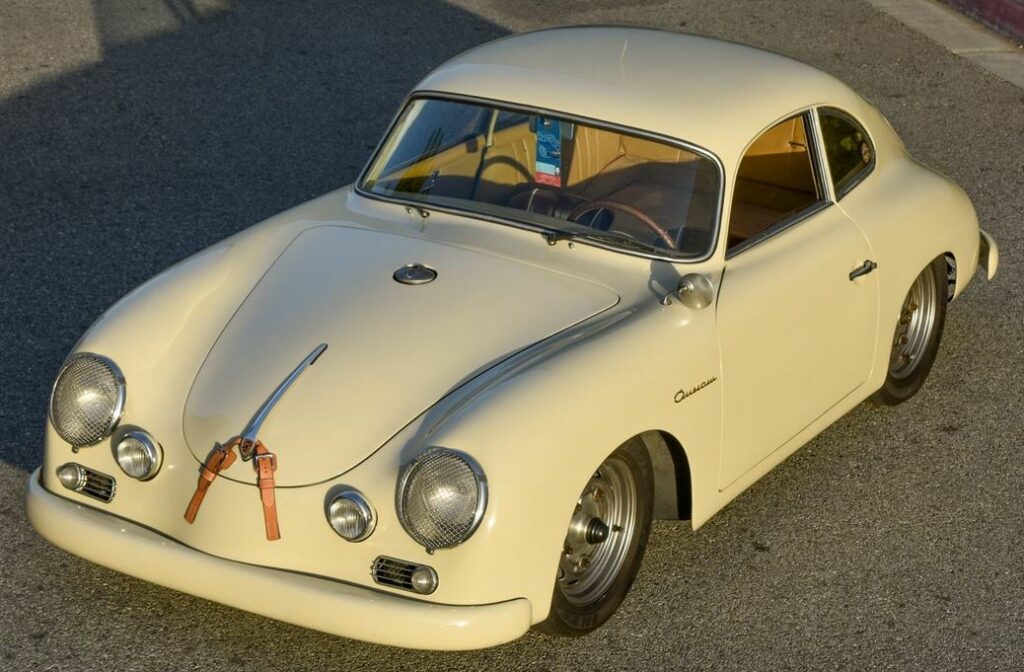
As Longtime Readers know, I’m not a Porsche fan, because they’re ugly. But if I were ever in a position to get just one Porsche, the 356 (pure or resto-modded) is probably the only one I’d consider.
And just for the hell of it, this is Jay’s favorite car in his entire garage. And it’s been “sympathetically” restored.
I want one like that, too.
“Oh good grief, here’s Kim grinding on about old stuff again.”
Yeah, guilty as charged.
Watch Jay Leno’s glorious love affair with his 1940 Lagonda 4.5-liter V12. His is a direct, faithful copy of the cars which were taken straight off the street and raced at Le Mans in 1939 — and placed 3rd and 4th, the very first time they were entered.
After watching that, tell me you don’t want to smack him over the head and take his car. And if you feel a little intimidated by the size and manual strength needed to drive the thing, you need to take some double-strength manly pills. Me, I’d do it all in a flash.
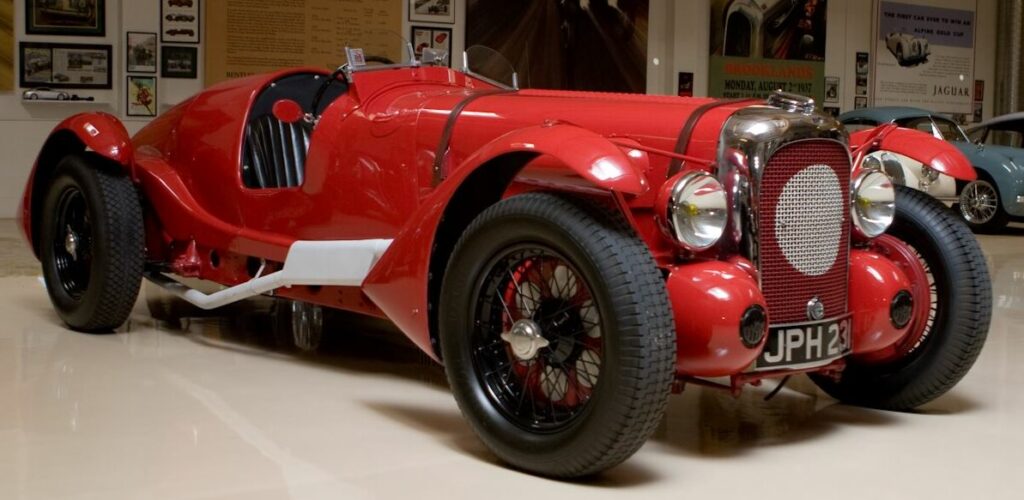
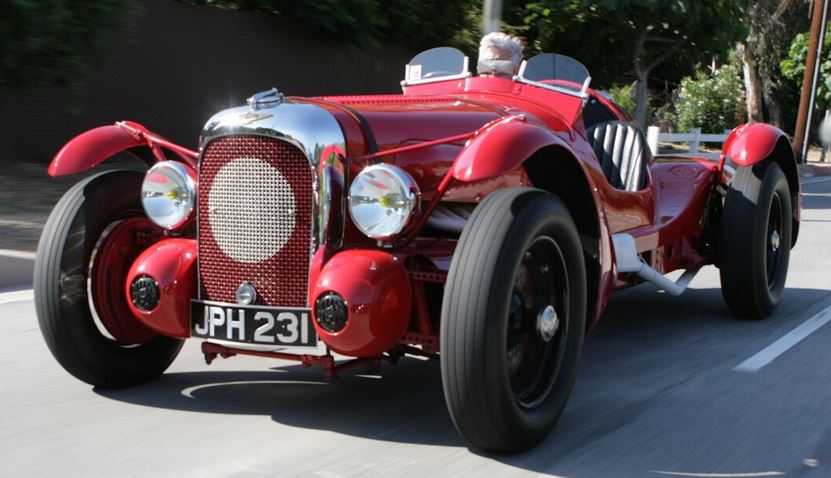
Now watch Henry Chan shooting what is, to me, the firearm’s equivalent of that Lagonda: the Mauser K98 bolt-action rifle. (For background, here’s Ian McCollum.)


Same idea, same technique, same principle for both: outstanding performance, infallible reliability and guaranteed to put a smile on your face every time you take it out for a spin.
Like the one on Jay’s face.
I need to get back out to TDSA and shoot my K98, because I want to get that same smile. (And I use a rubber recoil pad, just like old hickok45 does.)

I don’t have a Lagonda, though. Bummer.
We’ve had many conversations, sitting around the firepit on this my back porch, listening to the screams of socialists as they turn on the spit… where was I?
Oh yeah, that’s right: conversations about quality, technology and so on. I, of course, am a neo-Luddite when it comes to climbing up the quality / cost curve because as much as I may enjoy the quality or immense technology behind some geegaw (Purdey shotguns, Patek Philippe watches and Bentleys, to name but some), I just can’t justify to myself the horrendous costs involved in scaling the peak or reaching the very end of the curve, so to speak.
To give but one example, when I see the intricacy of a watch like this IWC Portuguese Tourblllon:

…I can appreciate the engineering precision and sheer brilliance of its design; but I just can’t see myself dropping around $150k on it.
But a lousy $150k is nothing compared to the other Tourbillon, that of the new Bugatti which will arrive sometime in 2026.
I did not know that Mate Rimac (yes, the guy who brought us the all-electric Rimac supercar) was now the CEO of Bugatti. But anything this guy touches turns to magic, so spend the next half-hour with him as he explains the design and engineering behind the new EB Tourbillon, which is to the current generation of supercars as the 2024 Rolls-Royce Corniche is to the 1924 Silver Ghost.

Never mind that none of us will ever own one of these, and never mind that it’s hopelessly impractical and horribly overpowered.
It is to my mind, however, the perfect marriage of design and technology, and an example of what happens when a man absolutely refuses to compromise, on anything.
He’s climbed the curve past the point where anyone else might have stopped, and frankly, there’s no telling where it will lead.
Brilliant.
Here’s some “interesting” news about driving in the Eeeew and Britishland:
UK drivers have been issued a four-week warning of motoring laws being tightened in an attempt to crackdown on the number of speeding fines and accidents.
From July, the UK could see EU speed limiters being installed in cars. All showroom vehicles will be required to come equipped with Intelligent Speed Assist (ISA) technology. Cars that have already been manufactured but have yet to be sold will also have to adhere to the new rules.
“The new rules,” a spokesperson for Motor Match said, “introduce ‘mandatory’ speed limiters, changing how we drive on roads.”
Question: when is Brexit not Brexit? When the BritGov slavishly follows an EU diktat. And note that the foul ISA thing is labeled (Orwellian style) as “Assist” and not “Control” (which is its true function).
Of course, that could never happen in Murka, you might say. Well, technically, Kalifornia isn’t really part of the republic, so:
California could soon join the European Union in requiring all new cars to alert drivers when they break the speed limit, a proposal aimed at reducing traffic deaths that would likely impact drivers across the country should it become law.
The federal government sets safety standards for vehicles nationwide, which is why most cars now beep at drivers if their seat belt isn’t fastened. A bill in the California Legislature — which passed its first vote in the state Senate on Tuesday — would go further by requiring all new cars sold in the state by 2032 to beep at drivers when they exceed the speed limit by at least 10 mph.
Of course, the Golden Shower state’s little exercise in statist nannyism is just an “advisory” device…
I leave the rest to your imagination.
…that I’d like to own. But only under the following Terms & Conditions.
Ever wish that you could get an old British car, but manufactured with modern processes like proper (i.e. non-Lucas) electrical wiring, proper (i.e. non-British Leyland) corrosion resistance and so on? In other words, get a car that wouldn’t rust to shreds after the first rainstorm and whose lights, radio and windshield wipers could operate simultaneously?
My, how those choices would open up. Yes, I know: E-type, Lotus Esprit, XK120, etc. etc. But everyone knows those cars, everyone would love to have one, and so on. What about those that aren’t as well known?
Here are my Top 6 in this category (in no specific order) and as a bonus, in each title there’s a link to see why it’s there. [warning: watching all the videos makes this post a very long read, but it’s the weekend, FFS]
Rover 3500 SD1
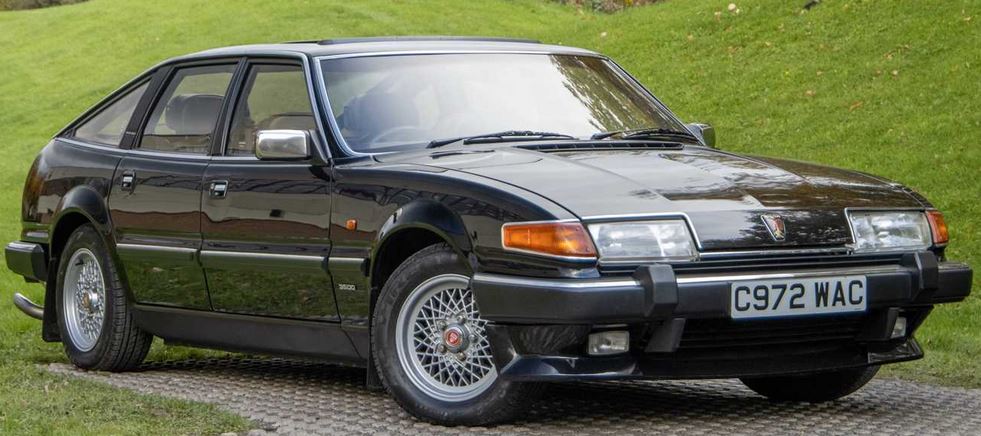
(Of all these cars, the 3500 would be the one most in need of modernized manufacturing, as the linked video will explain. But I need a larger car, and this one fits the bill admirably.)
Austin Mini-Cooper 1275 S

(Best comment is in the above: “Paul Newman, Steve McQueen, James Garner… these guys all knew cars, and they could drive anything they wanted. All three drove a Mini.” ) I’m not as famous, and I don’t know as much about cars; but I too would drive a Mini: this Mini. Right now, if I could.
By the way, you can see the TR4 and two other of my favorites of the era, the MGB GT and the Austin Healey 3000, here.
Finally, my last choice is an interesting one. And it’s ugly.
I actually know the SP250 reasonable well, because back when Longtime Friend Knob was still Drummer Knob, this was the car he owned when first I met him. And he could actually fit his drum kit in the thing, as long as he didn’t want to carry a groupie his girlfriend as well.
As ugly as that car was, though, I loved it — most of all because of that fantastic 2.5-liter V8 Daimler engine, which sounded wonderful and had enough torque to pull a house off its foundations.
But exercising my prerogative (because once again, it’s my list), I would want a Daimler that wouldn’t make me think of a surprised cod each time I walked into the garage. Step forward, the later 1967 Daimler SP252 with its Vignale-styled body:
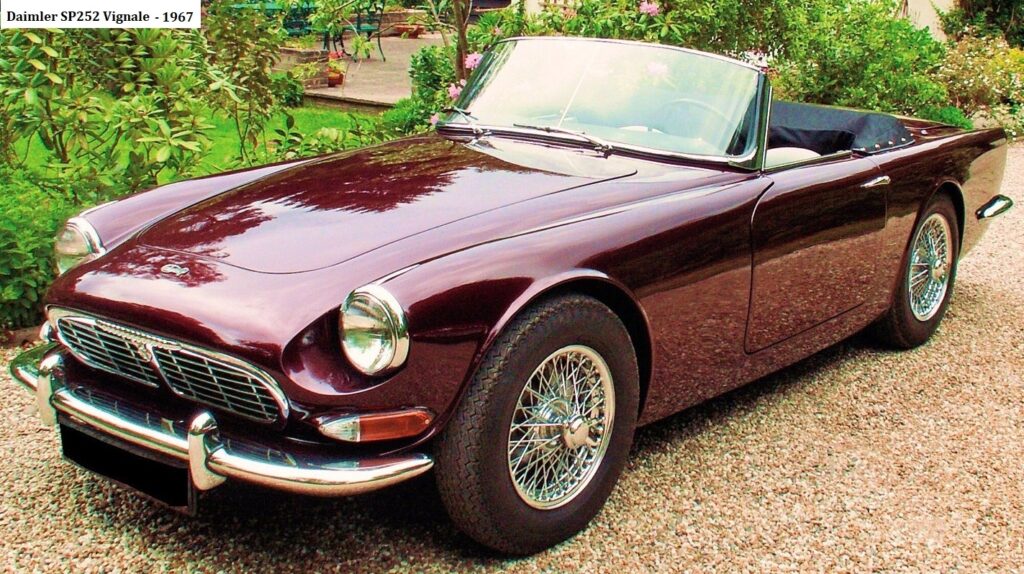
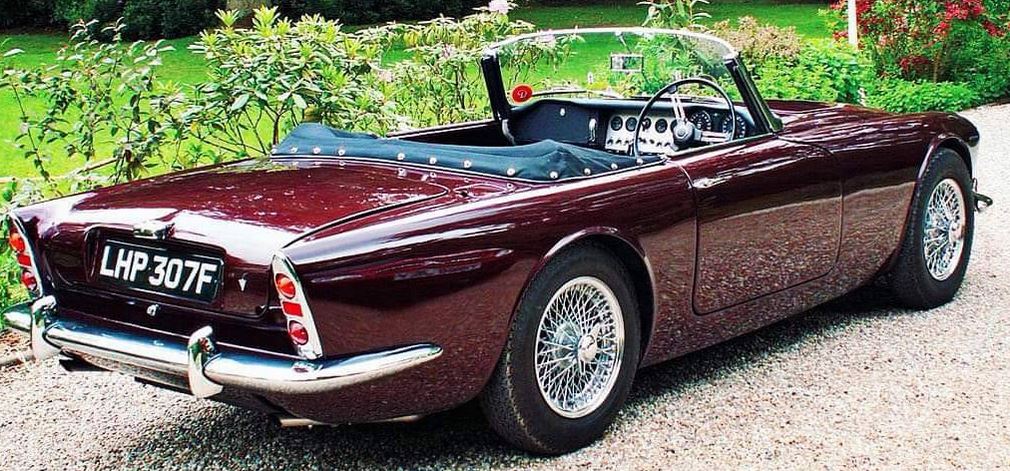
Same engine (as reworked by Jay Leno), same everything except a beautiful body.
I’m sorry, but that SP252 makes my heart go all squonky, like if I were to find Diana Rigg in its passenger seat.

If only…
WANT, TIMES 6.
Seven, if you include Miss Rigg.
Classic British lines, every single one of them.
Follow up: Knob reminds me that he sold the Daimler to a buddy, who whipped the engine out, trashed the Daimler chassis in its entirety, and dropped the V8 into a Morgan.